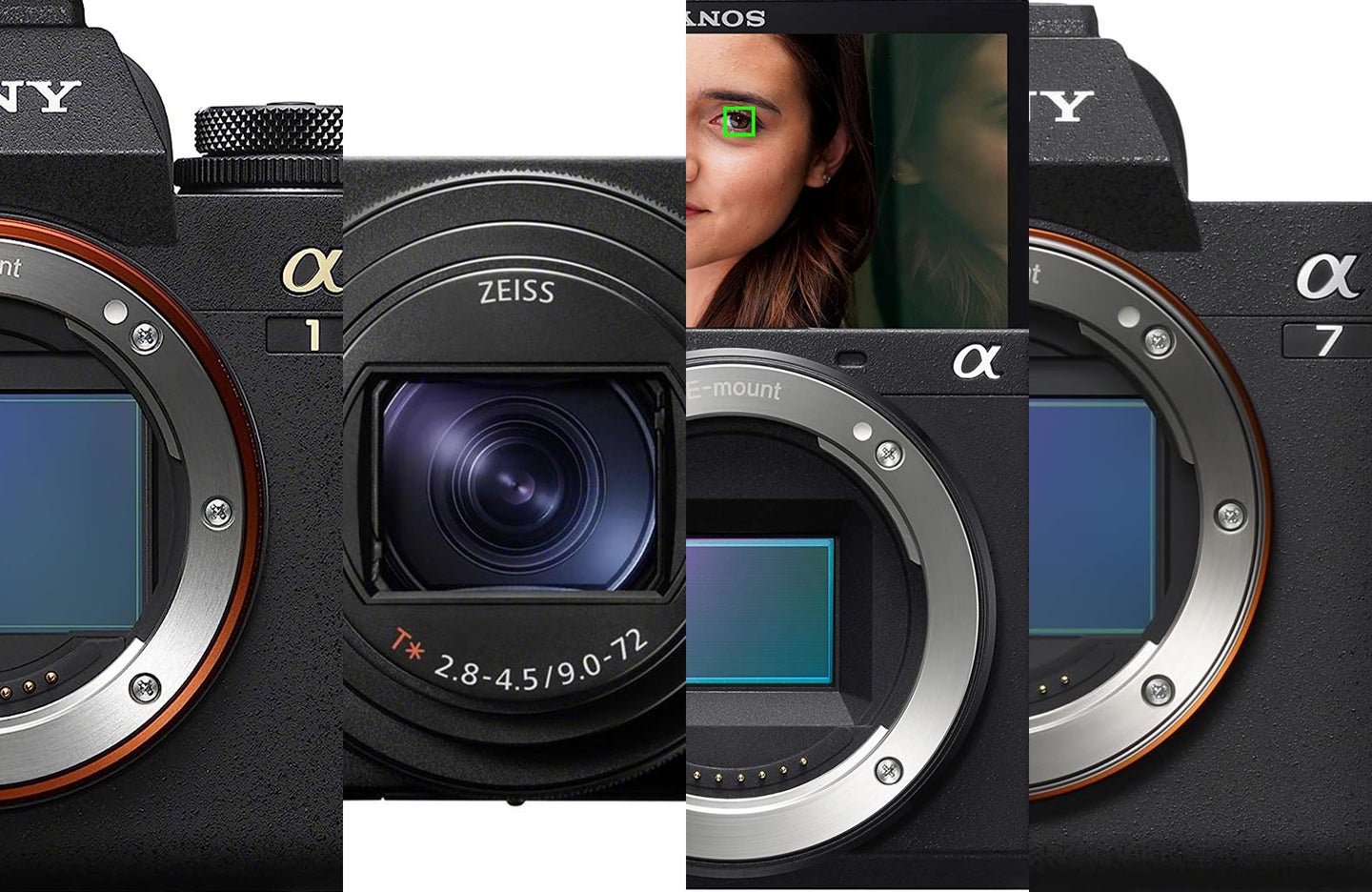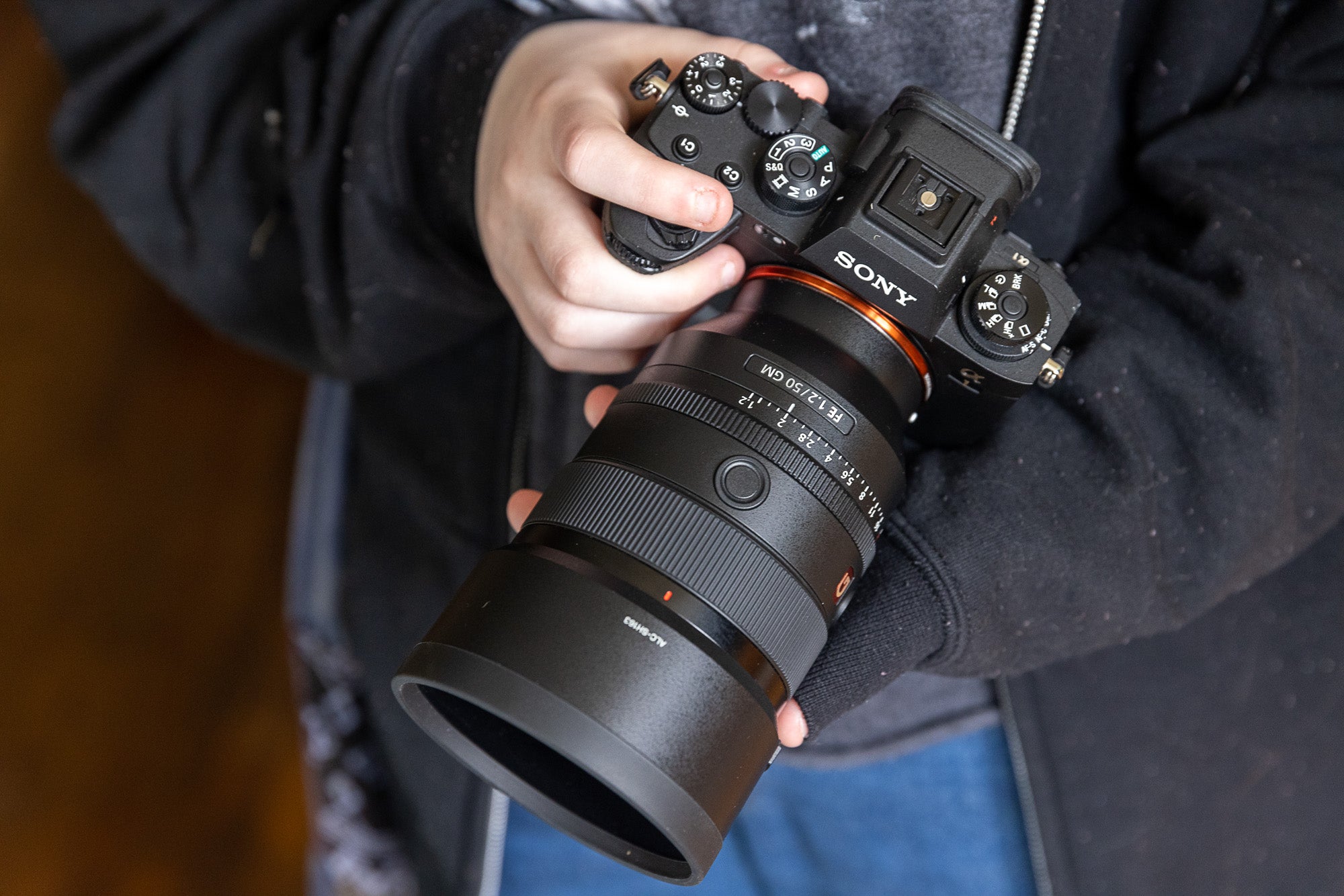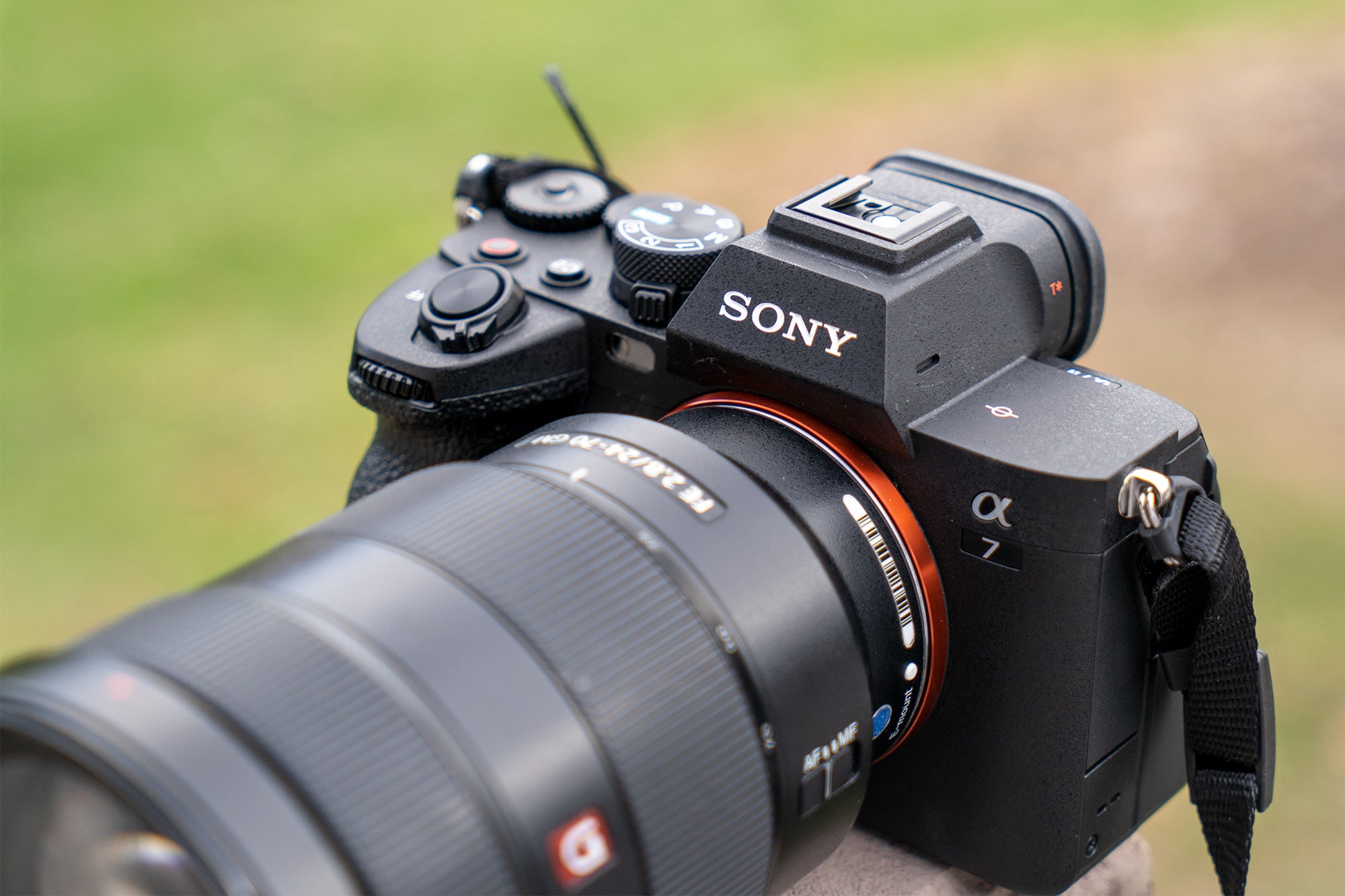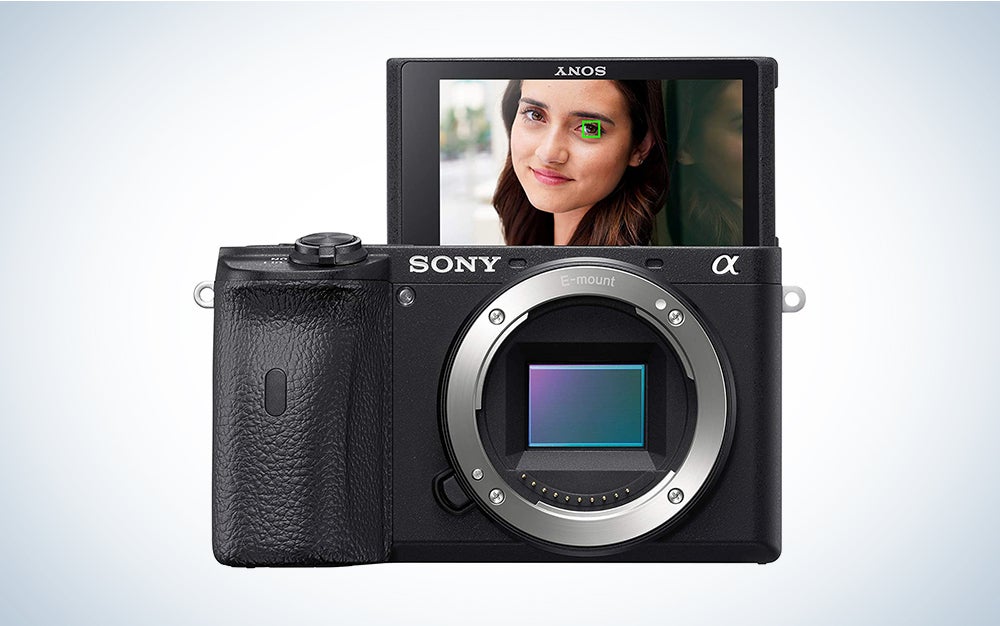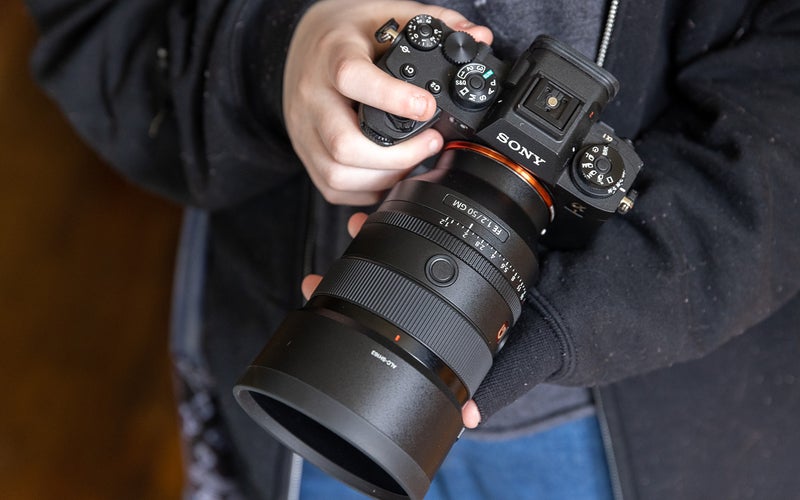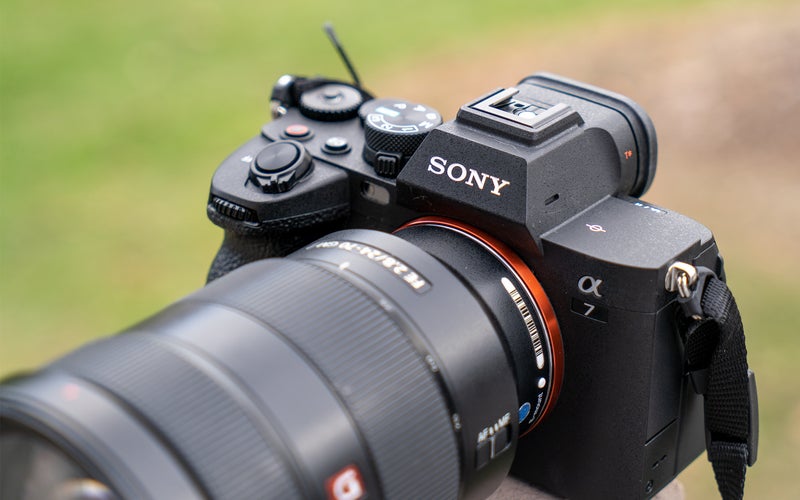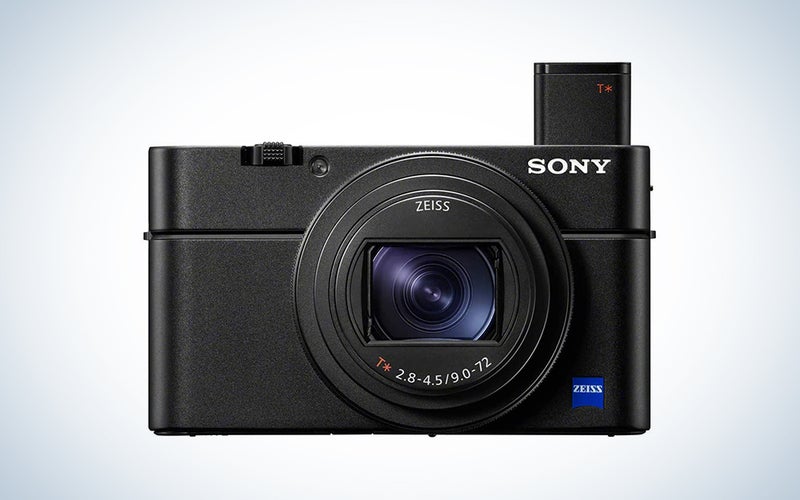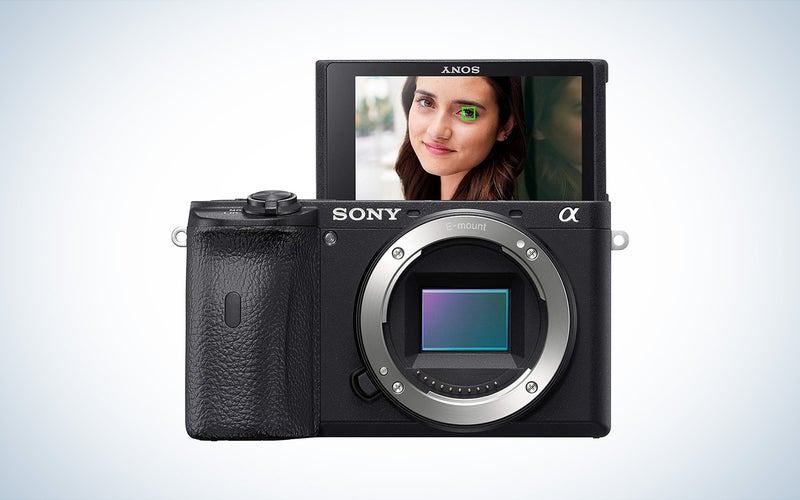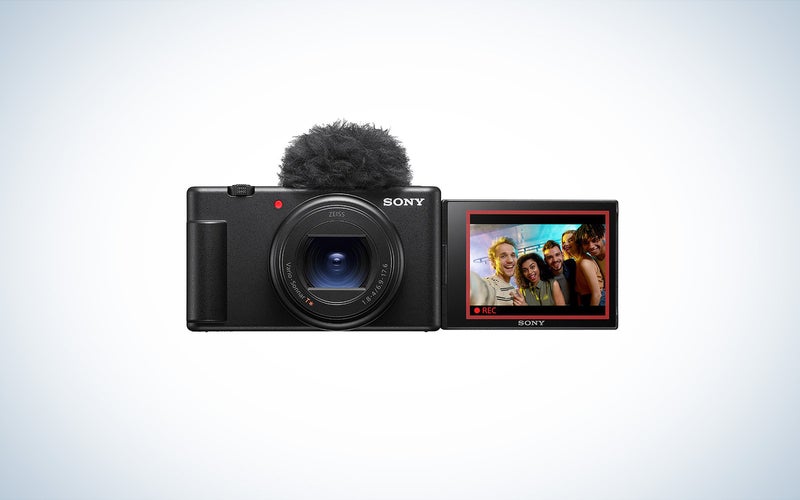We may earn revenue from the products available on this page and participate in affiliate programs. Learn more ›
Sony cameras have come a long way in the last decade. The electronics giant moved from a line of compact cameras to being one of the most dominant manufacturers in the camera business. Its current lineup contains everything from beginner-friendly compacts to super-pro-level mirrorless cameras with industry-leading sensors. All those choices can make picking the best option a challenge. Luckily, Sony’s camera lineup has a logical progression. And as long as you know what you’re looking for, there’s likely a camera in the mix that will suit your needs. Here, we’ll run down some of the most important things to consider when shopping for the best Sony cameras.
- Best overall: Sony A1
- Best for upgrading to full-frame: Sony A7 IV
- Best compact camera: Sony RX100 VII
- Best for advanced amateurs: Sony A6600
- Best for aspiring content creators: Sony ZV-1 II
How we chose the best Sony cameras
The writers and editors at Pop Photo have decades of experience with just about every camera brand out there. We have hands-on experience with many of the cameras on this list, and I myself have used Sony cameras almost exclusively for the past five years.
When making the selections in this buying guide, we first considered the full range of Sony’s offerings and the different types of photographers, videographers, and creators who use them. We aimed to choose options that would meet the needs of most people and situations. Image and video quality, autofocus abilities, battery life, usability, and price were all key factors in our decisions.
The best Sony Cameras: Reviews & recommendations
Whether you are just getting started, taking your vlogging and content creation to the next level, or a pro looking for a new camera body, one of these options is sure to fit your needs.
Best overall: Sony A1
Stan Horaczek
Specs
- Resolution: 50 megapixels
- Sensor size: Full-frame
- Lens mount: Sony E
- Image stabilization: Sensor-Shift, 5-Axis
- Memory card slots: Dual slot: CFexpress Type A / SD (UHS-II)
- Weight: 1.6 pounds
- Dimensions: 5.07 x 3.81 x 2.74 inches
Pros
- Fast burst shooting is ideal for action
- Produces superb high-resolution photos
- Class-leading electronic shutter
- Excellent autofocus
Cons
- Expensive
This $6,500 beast is the true alpha in Sony’s Alpha lineup. Its full-frame 50-megapixel sensor can crank out full-res images at up to 30 fps. And that fast burst rate still takes advantage of full AF and AE capabilities and can continue for 155 compressed raw frames. That means you can take it into the studio and shoot high-res commercial work, then step out onto the sidelines at a football game and blast away at a super-high framerate to capture fast action.
The a1 isn’t just for still shooting, either. It’s capable of high-quality 8K 30p video capture with the full width of the sensor. The footage is oversampled from 8.6K, resulting in highly-detailed content. Or, you can lower the quality to UHD 4K for 120 fps with a 10 percent crop. The camera also provides advanced color control, including S-Cinetone, S-Log2, and S-Log3 for 15 stops of dynamic range.
As we hope to see on such a high-performing camera, the autofocus system is stellar. The hybrid AF system covers 92 percent of the sensor and can function down to -6 EV. It offers Real-time Eye AF with a dedicated bird mode. Overall, the Sony a1 is not just the best Sony camera at the moment, it’s easily one of the best cameras you can buy right now, period.
Best for upgrading to full-frame: Sony A7 IV
Abby Ferguson
Specs
- Resolution: 33 megapixels
- Sensor size: Full-frame
- Lens mount: Sony E
- Image stabilization: Sensor-Shift, 5-Axis
- Memory card slots: Slot 1: CFexpress Type A / SD (UHS-II), Slot 2: SD/SDHC/SDXC (UHS-II)
- Weight: 1.4 pounds
- Dimensions: 5.2 x 3.8 x 3.1 inches
Pros
- Well-rounded feature set
- Superb image and video quality
- Excellent autofocus performance
- Effective image stabilization
Cons
- Only 6 fps burst shooting at the highest quality
While the A1 is overkill for most photographers, the A7 IV provides an excellent mix of features that should appeal to a very wide group of people. Sony updated the fourth iteration of the a7 line with a new 33-megapixel back-side illuminated sensor. And it improved the color science, with more accurate colors coming straight out of the camera.
From a video perspective, the a7 IV is capable of 4K 60p, which is oversampled from a 4.6K capture area for better detail. Or you can opt for 4K 30p with 7K oversampling. Added to this camera is focus breathing compensation, resulting in even smoother footage. And it’s fitted with Sony’s impressive autofocus, which includes AI-based subject recognition and tracking with real-time Eye AF.
This is a great entry point into full-frame mirrorless that will let you build on it for years to come, though it is somewhat pricey. If you would like to save a little money, the a7 III isn’t far behind the a7 IV in terms of performance and features and is $400 cheaper at the time of writing.
Best compact camera: Sony RX100 VII
Sony
Specs
- Resolution: 20.1 megapixels
- Sensor size: One-inch
- Lens mount: N/A
- Image stabilization: Digital and optical in integrated lens
- Memory card slots: Single slot: SD/SDHC/SDXC
- Weight: 10.65 ounces
- Dimensions: 4 x 2.29 x 1.69 inches
Pros
- Very compact
- Excellent autofocus
- Quality integrated lens
- Good image and video quality
Cons
- Expensive for a compact camera
- Camera body is slick
When it comes to true compact cameras, the RX100 VII is still probably the all-around best Sony camera you can get. Its one-inch sensor pairs with a 24-200mm f/2.8-4.5 equivalent Zeiss lens to produce image quality that smartphone cameras can’t touch. And the focal length range is highly versatile, making it an ideal choice for travel.
The RX100 VII offers impressive autofocus tracking that works well for both stills and video. It’s capable of high-quality UHD 4K 30p video recording with effective stabilization. It produces quality jpegs with good colors and is capable of producing raw files should you want more editing freedom. And you can shoot bursts up to 20 fps, making it a worthwhile tool for documenting action.
The three-inch rear screen tilts up so that you can use it for selfies or vlogging. Or, you can use the pop-up eye-level viewfinder if you don’t want to hold the camera out in front of you to shoot. If you can’t afford the most recent model, you can go back a few generations and get a still-great little camera for less money.
Best for advanced amateurs: Sony A6600
Sony
Sony’s flagship APS-C camera has a truly impressive spec sheet. It houses Sony’s familiar 24.2-megapixel sensor but promises the “world’s fastest” autofocus system. While your real-world mileage may vary on the claim, you will get excellent AF tracking as well as 5-axis image stabilization built into the body to combat the results of shaky hands.
Though the camera produces excellent still photos, it’s also capable of UHD 4K 30p video. The 4K video uses full pixel readout and is oversampled from 6K, providing highly detailed results. And there is no recording limit, so you can capture long takes.
If you can’t swing the A6600’s price tag, Sony also still sells some older versions that can still hang with the best of them. The A6400, for example, will cost you less than $900 on the current market, and it offers many of the same features you’ll find in the A6600. Or, if you are looking for something slightly more advanced than the A6600, the Sony announced A6700 this summer. It’s available for pre-order now, but on paper, it seems it will surpass the A6600, and we look forward to testing it in the near future.
Best for aspiring content creators: Sony ZV-1 II
Sony
Sony’s original ZV-1 was an extremely popular vlogging camera, and the second iteration keeps that tradition going. The ZV-1 II still utilizes a 1-inch 20.1-megapixel sensor, but Sony upgraded it to a stacked design for faster readout times. It’s capable of 4K 30p video with digital stabilization. And it offers 5x slow or 60x quick motion in S&Q mode for more creative control.
The other major change on the ZV-1 II is the wider lens. The camera now features an integrated 18-50mm (35mm equivalent) lens. That’s less range than the original, but it provides a wider angle, which is ideal for vlogging. And it utilizes Sony’s Hybrid AF system, resulting in fast and accurate autofocus with impressive tracking abilities.
The ZV-1 II features a built-in ND filter for cutting down exposure by three stops, which allows you to get bokeh even when shooting in bright sun. And there are lots of built-in creative modes, so you can spend less time editing your content and more time shooting. It’s an ideal choice for those just getting started with vlogging or who don’t want to fuss with their content too much.
Things to consider before buying the best Sony cameras
Sony makes an expansive list of cameras covering many different categories. As a result, it can be hard to figure out what actually makes sense to buy for your needs. Below are some key things to look out for and think about when buying a new Sony camera.
Camera type
Sony makes both mirrorless cameras with interchangeable lens systems and compacts with integrated lenses. Mirrorless cameras are great because they offer lots of options and features. The ability to change lenses to what fits a particular situation is also a plus, and you can typically choose from higher-quality glass as well.
But if you’re never planning to switch lenses, why pay for the privilege? Modern compact cameras have really stepped up their performance in recent years to occupy the high-end space in which smartphones still can’t compete. For example, Sony’s RX100 IV offers many of the same features you’ll find in a mirrorless camera, including a 20.1-megapixel sensor and super-fast autofocus with 315 AF points covering 65 percent of the sensor.
Sensor size
Within Sony’s interchangeable lens cameras, you’ll find two sensor sizes: Full-frame or crop sensors, otherwise known as APS-C. Each sensor size has its advantages and disadvantages. What is best for you is dependent on what you plan on shooting and how you will be using your camera.
APS-C cameras are more affordable and are thus typically labeled as beginner-friendly cameras. Sony offers a nice range of APS-C cameras with truly advanced features, however, making them worthwhile even for pros. And there are options for still shooters and video-focused creators alike.
While the full-frame sensor of the a1 can meet the needs of just about every type of photographer, even at the highest levels, some of us don’t have the need–or the budget–for that kind of purchase. You don’t have to hop into the full-frame series at the deep end, however. Sony’s original A7 line debuted back in 2013 as the first full-frame mirrorless camera to hit the market. It was a straight-down-the-middle body that offered solid performance across the board for hybrid shooters. Sony has continued that tradition with each A7 update.
Don’t neglect the specialty cameras
If you want to shoot hardcore pro video with Sony cameras, then the company has a whole line of them, including the FX3 and the FX6V. Those cameras, however, require a heavy-duty budget to go along with your production. Almost any of the Sony mirrorless cameras–and even the compacts–will shoot excellent video. But if you’re looking for something built specifically for video at a more affordable price point, you’ll want to check out Sony’s ZV lineup, which is the company’s vlogging line of cameras.
Get a camera you can grow into
If you’re planning to really grow your photographic skills, you’ll want a camera that can grow with you. Similarly, if you’re already an advanced shooter, you don’t want to buy a body that will hold you back with its lack of features. Looking across the Sony full-frame lineup, you’ll find a number of cameras that serve specific needs.
The A7R IV boasts a massive 61-megapixel sensor with 15 stops of dynamic range, which is great for studio, portrait, and commercial shooters. On the other side of the coin, the A9 II shoots 24.2-megapixel photos but excels at sports with its advanced AF system and 20 fps capture speed. The $3,500 A7S III has an even lower megapixel count at just 12 mp. It excels at super low-light and video shooting.
FAQs
Q: Which Sony camera is best?
Without more context than this, you can’t beat the Sony A1. It’s one of—if not the—best mirrorless cameras on the market at the moment. Super-fast 30 fps capture from a 50-megapixel sensor makes this beast the top of the heap.
Q: Which is the best Sony DSLR camera?
Unfortunately, Sony recently stopped producing its A-series DSLR cameras. Now, the company’s focus lies squarely on the E-mount mirrorless cameras. You can still use some of those older A-mount lenses on mirrorless bodies if you have an adapter.
Q: What is the best Sony Cyber-Shot camera?
For all-around use, the Sony RX-100 VII takes the crown. Its mix of versatile zoom range and high image quality makes it great in just about every situation. If you want to get wild with it, though, I might recommend the RX1R II. It has a full-frame sensor and a fixed 35mm f/2 Zeiss lens. Truly high-end stuff in a small package.
A final word about finding the best Sony cameras
- Best overall: Sony A1
- Best for upgrading to full-frame: Sony A7 IV
- Best compact camera: Sony RX100 VII
- Best for advanced amateurs: Sony A6600
- Best for aspiring content creators: Sony ZV-1 II
Sony has a ton of fantastic cameras to offer. They cover just about every specific need different photographers and videographers could ask for. While finding the best Sony camera for you may take some time, you’ll end up with a solid base on which you can build your gear kit over the years.
Why trust us
PopPhoto has a long history of delivering the opinions of some of the sharpest and most prolific camera dorks the world has to offer. Since 1937, we’ve been reviewing cameras, providing wisdom from well-known photographers, and generally just nerding out about all that goes into making great pictures. Our current crop of writers and editors have decades of professional photography and camera writing experience among them. Collectively, we’ve probably shot with just about every camera and lens combo you can imagine—as well as some obscure stuff you may not even know about. Remember the Casio Tryx folding camera? PopPhoto does.
We also get that buying a camera is a big decision, which is why we’re dedicated to helping folks choose the right one (or, in our case “ones”) for their needs. Case in point: Handing over top dollar for an expensive rig may leave you unsatisfied if it doesn’t fit your preferred shooting style. Sure, a $6,000 sports-oriented DSLR can capture landscapes, but do you really need to do it at 30 frames-per-second? No, you don’t.
